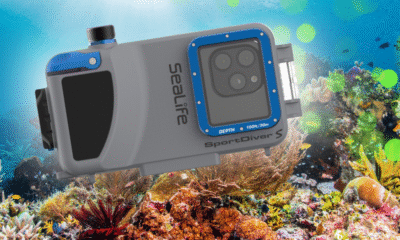Photography
Capture the Streets: The Best Sony Cameras for Street Photography
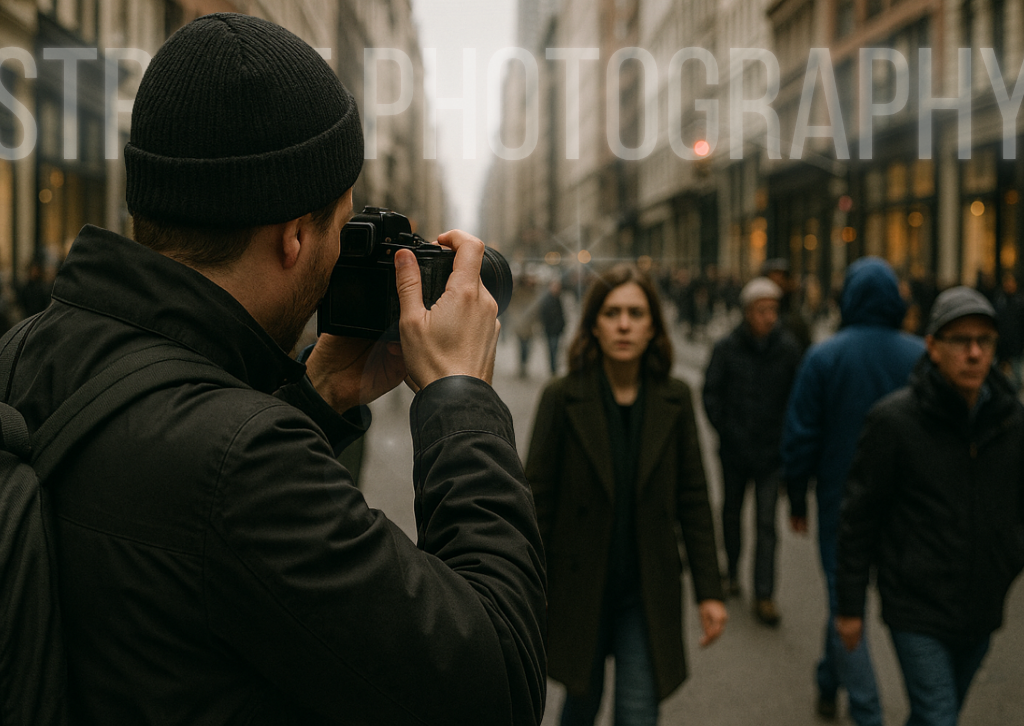
Capture the Streets: The Best Sony Cameras for Street Photography
The streets are alive with stories waiting to be captured, and the right camera can make all the difference. Street photography is not simply about snapping pictures; it’s about freezing fleeting moments that showcase the essence of urban life. In this vibrant and dynamic field, Sony cameras stand out for their outstanding performance, intuitive features, and compact designs. Whether you’re a seasoned photographer or just starting your journey, Sony offers an impressive range of cameras that can elevate your street photography to new heights. From the powerful sensors to the rapid autofocus capabilities, these cameras are made to help you seize those unguarded moments in an instant. Discover the best Sony cameras that are perfect for capturing the streets, and unleash your creativity as you document the world around you in stunning detail. Let’s explore the top options that will inspire your artistic vision and transform your street photography game.
Why Choose Sony Cameras for Street Photography?
When it comes to street photography, choosing the right camera is paramount to capturing those fleeting moments that tell compelling stories. Sony cameras have carved out a niche in this genre due to their remarkable blend of innovative technology, portability, and superior image quality. With a rich history in developing state-of-the-art imaging solutions, Sony has consistently pushed the boundaries of what photographers can achieve. For street photographers, the advantages of using Sony cameras are manifold.
Firstly, Sony’s mirrorless camera systems stand out for their compact and lightweight designs. Unlike bulky DSLRs, Sony’s mirrorless cameras are easier to carry around, allowing photographers to move swiftly and unobtrusively through urban environments. This is crucial for street photography, where spontaneity and the ability to blend into the background are key. The compact form factor of Sony cameras ensures that photographers can remain agile and ready to shoot at a moment’s notice.
Another significant advantage is the superior image quality that Sony cameras deliver. Equipped with advanced sensors and image processors, Sony cameras excel in capturing high-resolution images with exceptional detail and dynamic range. Whether shooting in broad daylight or low-light conditions, Sony cameras maintain impressive performance, ensuring that every nuance of the street scene is preserved. This level of detail is essential for creating impactful street photographs that resonate with viewers.
Moreover, Sony cameras are renowned for their cutting-edge autofocus (AF) technology. In the fast-paced world of street photography, the ability to quickly and accurately focus on subjects can make or break a shot. Sony’s Real-time Eye AF and Real-time Tracking features are game-changers, enabling photographers to lock onto subjects with precision, even when they are moving. This ensures that each shot is sharp and in focus, capturing the essence of the moment. With these advanced features, Sony cameras empower street photographers to push the limits of their creativity and capture the streets like never before.
Key Features to Look for in a Street Photography Camera
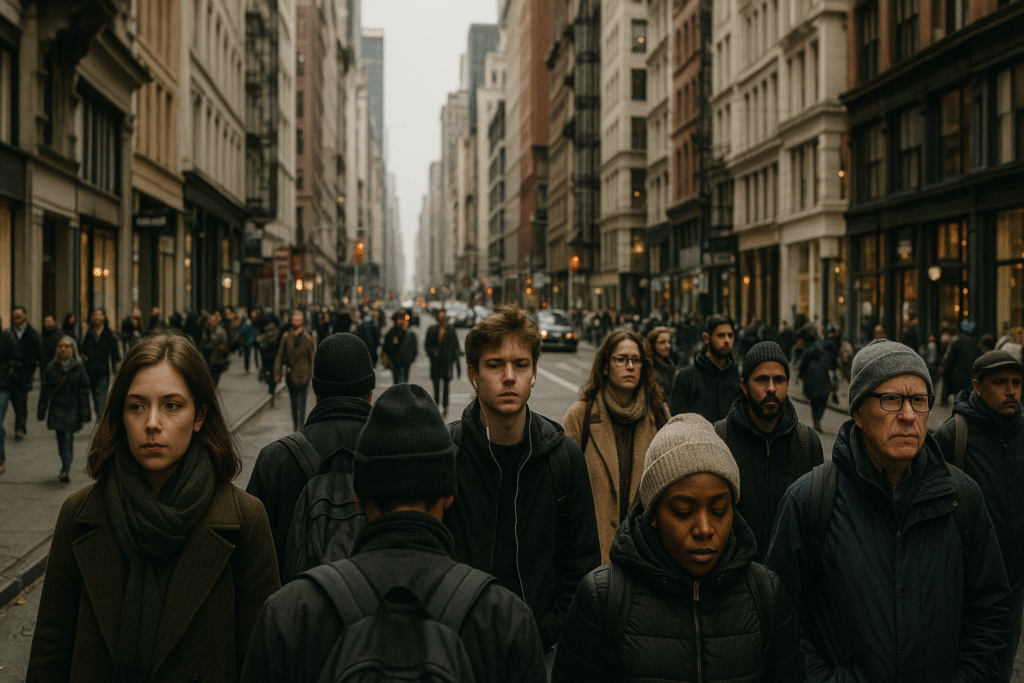
Choosing the right camera for street photography involves understanding the key features that can enhance your shooting experience. While personal preferences play a role, certain attributes are universally beneficial for street photographers. Here are some essential features to consider when selecting a Sony camera for street photography.
Portability is a top priority for street photographers, making camera size and weight critical factors. A compact and lightweight camera is easier to carry around and allows for more discreet shooting. Sony’s mirrorless cameras are particularly advantageous in this regard, offering high performance without the bulk of traditional DSLR cameras. This makes it easier to navigate crowded streets and capture spontaneous moments without drawing attention.
Another vital feature is the camera’s autofocus capability. Fast and accurate autofocus is essential for capturing fleeting moments and moving subjects. Sony’s advanced AF systems, such as Real-time Eye AF and Real-time Tracking, provide reliable performance, ensuring that your subjects are always in sharp focus. These features are especially useful in dynamic street environments where split-second decisions are crucial.
Image quality is another key consideration. High-resolution sensors and powerful image processors are necessary for capturing detailed and vibrant street scenes. Sony’s Exmor R and Exmor RS sensors, coupled with BIONZ X image processors, deliver outstanding image quality with excellent dynamic range and low noise performance. This ensures that your photos have the clarity and detail needed to tell compelling visual stories. Additionally, features like in-body image stabilization (IBIS) can help reduce camera shake, resulting in sharper images, especially in low-light conditions.
Top Sony Cameras for Street Photography
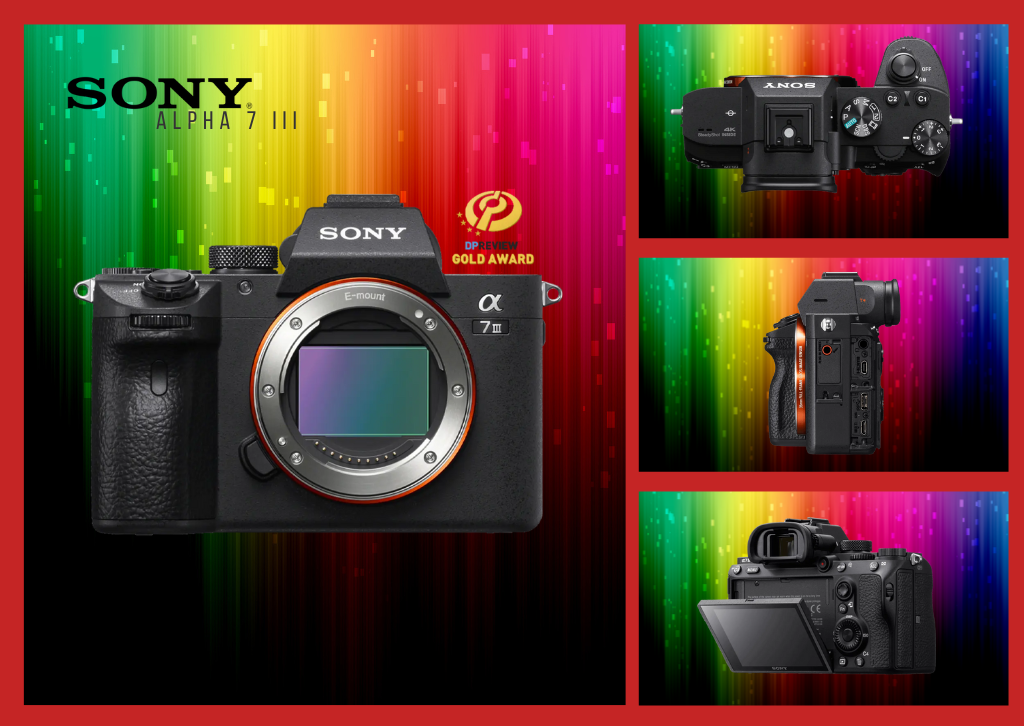
Sony offers a diverse range of cameras that cater to different needs and preferences in street photography. Whether you are a beginner or a seasoned professional, there is a Sony camera that can elevate your street photography. Here are some of the top Sony cameras that are highly recommended for capturing stunning street photos.
The Sony Alpha a7 III is a standout choice for many street photographers. Known for its impressive balance of performance and affordability, the a7 III features a 24.2-megapixel full-frame sensor and the BIONZ X image processor. This combination delivers exceptional image quality with rich detail and dynamic range. The camera also boasts a fast and accurate 693-point phase-detection AF system, making it ideal for capturing quick, candid moments. Its compact and ergonomic design further enhances its suitability for street photography, allowing photographers to shoot comfortably for extended periods.
For those seeking a more advanced option, the Sony Alpha a7R IV is a powerful contender. With a 61-megapixel full-frame sensor, the a7R IV offers unparalleled resolution and detail, making it perfect for capturing intricate street scenes. The camera’s robust autofocus system, featuring 567 phase-detection points, ensures that subjects are always in sharp focus. Additionally, the a7R IV’s rugged build and weather-sealed body provide durability in various shooting conditions, making it a reliable tool for street photographers who demand the best.
The Sony Alpha a6400 is another excellent option, particularly for photographers who prefer a more compact and budget-friendly camera. This APS-C mirrorless camera features a 24.2-megapixel sensor and the BIONZ X processor, delivering high-quality images with impressive clarity. The a6400’s Real-time Eye AF and Real-time Tracking capabilities make it a formidable choice for street photography, ensuring that you can capture fast-moving subjects with ease. Its lightweight design and versatile features make it a popular choice among street photographers looking for a portable yet powerful camera.
Comparison of Sony Camera Models for Street Photography
Comparing different Sony camera models can help you determine which one best suits your street photography needs. Each model offers unique features and strengths, catering to various preferences and shooting styles. Here, we’ll compare the Sony Alpha a7 III, Sony Alpha a7R IV, and Sony Alpha a6400 to help you make an informed decision.
The Sony Alpha a7 III is often praised for its all-around performance and value for money. With a 24.2-megapixel full-frame sensor, it strikes a balance between resolution and low-light performance. The 693-point phase-detection AF system ensures fast and accurate focusing, making it ideal for capturing dynamic street scenes. Additionally, the a7 III offers 5-axis in-body image stabilization, which is beneficial for handheld shooting. Its battery life is also commendable, providing up to 710 shots per charge, which is advantageous for long shooting sessions.
In contrast, the Sony Alpha a7R IV is designed for photographers who prioritize resolution and detail. Its 61-megapixel full-frame sensor is among the highest in the market, delivering stunningly detailed images that are perfect for large prints and cropping. The a7R IV’s autofocus system is equally impressive, with 567 phase-detection points that cover a wide area of the frame. While the a7R IV is slightly bulkier and more expensive than the a7 III, its advanced features and superior image quality make it a worthy investment for serious street photographers.
The Sony Alpha a6400, with its APS-C sensor, offers a more compact and affordable alternative. Despite its smaller sensor size, the a6400 delivers excellent image quality with its 24.2-megapixel resolution. The Real-time Eye AF and Real-time Tracking features provide top-notch autofocus performance, which is crucial for street photography. The a6400’s compact size and lightweight design make it highly portable, allowing photographers to shoot discreetly in various urban settings. While it lacks the in-body image stabilization found in the a7 III and a7R IV, its affordability and performance make it an attractive option for many photographers.
Essential Accessories for Sony Cameras in Street Photography
Equipping your Sony camera with the right accessories can enhance your street photography experience and help you capture better images. From lenses to carrying solutions, the right gear can make a significant difference. Here are some essential accessories to consider for your Sony camera.
Lenses are one of the most important accessories for any camera. For street photography, prime lenses with wide apertures are particularly popular due to their ability to create beautiful bokeh and perform well in low-light conditions. The Sony FE 35mm f/1.8 is a great choice, offering a versatile focal length and a wide aperture that excels in various lighting situations. Another excellent option is the Sony FE 50mm f/1.8, which provides a slightly longer focal length and is ideal for capturing portraits and detailed street scenes.
A reliable camera strap is another essential accessory for street photographers. Since you’ll be carrying your camera for extended periods, a comfortable and secure strap is crucial. The Peak Design Slide Lite Camera Strap is a popular choice, offering versatility and convenience with its quick-adjustment system and durable construction. It allows you to carry your camera comfortably across your shoulder or neck, reducing strain and ensuring that your camera is always within reach.
Lastly, consider investing in a good camera bag that suits your street photography needs. A compact and discreet bag can help you carry your gear without drawing unnecessary attention. The Think Tank Photo Retrospective 7 is a highly recommended option, providing ample space for your camera, lenses, and accessories while maintaining a low-profile design. Its durable build and comfortable carrying options make it ideal for navigating urban environments. Additionally, the bag’s quick-access pockets allow you to retrieve your gear swiftly, ensuring that you never miss a shot.
Tips for Capturing Stunning Street Photography with Sony Cameras
Street photography can be both challenging and rewarding, requiring a keen eye and quick reflexes to capture the essence of urban life. Here are some tips to help you make the most of your Sony camera and capture stunning street photographs.
One of the most important aspects of street photography is being prepared. Always have your camera ready with the appropriate settings for the lighting conditions. For instance, in bright daylight, a lower ISO and faster shutter speed will help you capture sharp images with good detail. Conversely, in low-light situations, you may need to increase the ISO and use a wider aperture to ensure proper exposure. Familiarize yourself with your camera’s controls and customize them to suit your shooting style, allowing you to make quick adjustments on the fly.
Another tip is to practice the art of observation. Street photography is all about capturing candid moments that tell a story. Spend time observing your surroundings and anticipating interesting scenes or interactions. Look for unique compositions, patterns, and contrasts that can add depth to your images. Being patient and waiting for the right moment can often result in more compelling photographs. Additionally, try to blend in with your environment to capture genuine, unposed moments without drawing attention to yourself.
Experimenting with different perspectives and angles can also enhance your street photography. Don’t be afraid to get low to the ground or find elevated vantage points to capture your subjects from unique viewpoints. This can add a dynamic element to your images and provide a fresh perspective on everyday scenes. Additionally, using leading lines, reflections, and framing techniques can help guide the viewer’s eye and create visually engaging compositions. By exploring various angles and perspectives, you can add creativity and originality to your street photography.
Post-Processing Techniques for Street Photography
Post-processing plays a crucial role in bringing out the best in your street photographs. With the right techniques, you can enhance the mood, contrast, and overall impact of your images. Here are some post-processing tips to help you elevate your street photography.
One of the first steps in post-processing is to adjust the exposure and contrast of your images. Street scenes often have a wide range of lighting conditions, and fine-tuning the exposure can help balance the highlights and shadows. Use tools like the histogram and exposure sliders in your editing software to achieve the desired brightness and contrast. Enhancing the contrast can add depth and dimension to your photos, making the subjects stand out more prominently.
Color grading is another important aspect of post-processing. Adjusting the white balance, saturation, and hue can help create a consistent and cohesive look for your street photography. Experiment with different color tones to evoke specific moods or atmospheres in your images. For example, warmer tones can convey a sense of nostalgia, while cooler tones can create a more modern and urban feel. Additionally, converting your images to black and white can emphasize textures, shapes, and contrasts, adding a timeless quality to your street photos.
Sharpening and noise reduction are also essential steps in post-processing. Sharpening can enhance the details in your images, making them appear crisper and more defined. However, be careful not to over-sharpen, as this can lead to unnatural artifacts. Noise reduction, on the other hand, can help minimize grain and noise, especially in low-light images. Use these tools judiciously to achieve a balance between preserving detail and reducing noise. By applying these post-processing techniques, you can enhance the overall quality and impact of your street photography.
Inspiring Street Photographers Using Sony Cameras
Many talented street photographers have chosen Sony cameras to capture their compelling urban narratives. These photographers have pushed the boundaries of street photography, using Sony’s advanced technology to create captivating images. Here are a few inspiring street photographers who use Sony cameras to document the world around them.
One notable street photographer is Jason Vong, known for his dynamic and vibrant street photos. Jason often uses the Sony Alpha a7 III to capture candid moments and interactions in urban settings. His work showcases the camera’s impressive autofocus capabilities and image quality, allowing him to freeze fleeting moments with precision. Jason’s ability to find beauty in everyday scenes and his keen eye for composition make his street photography truly inspiring.
Another talented street photographer is Manny Ortiz, who often uses the Sony Alpha a7R IV to create stunning street portraits. Manny’s work highlights the camera’s high-resolution sensor and exceptional detail, capturing the essence of his subjects with clarity and depth. His use of natural light and creative compositions adds a unique and intimate feel to his street portraits. Manny’s ability to connect with his subjects and capture their stories through his lens is a testament to the power of street photography.
Julia Trotti is also a renowned street photographer who frequently uses Sony cameras to document urban life. Julia’s use of the Sony Alpha a6400 demonstrates the camera’s compactness and versatility, making it ideal for street photography. Her work often features vibrant colors, interesting compositions, and a strong sense of place. Julia’s ability to capture the energy and character of different cities through her photography is both captivating and inspiring. By following the work of these talented photographers, you can gain valuable insights and inspiration for your own street photography journey.
Conclusion: Finding Your Perfect Sony Camera for Street Photography
Choosing the right Sony camera for street photography can significantly impact your ability to capture the essence of urban life. Whether you prioritize portability, image quality, or advanced features, Sony offers a range of cameras that cater to various needs and preferences. From the versatile Sony Alpha a7 III to the high-resolution Sony Alpha a7R IV and the compact Sony Alpha a6400, there is a Sony camera that can elevate your street photography.
Remember to consider key features such as portability, autofocus performance, and image quality when selecting your camera. Additionally, equipping your camera with essential accessories, such as prime lenses, camera straps, and bags, can enhance your shooting experience and help you capture better images. By following practical tips and post-processing techniques, you can further improve your street photography and create compelling visual stories.
Ultimately, the best Sony camera for street photography is the one that aligns with your creative vision and shooting style. Take the time to explore different models, experiment with various settings, and draw inspiration from other street photographers. With the right camera in hand, you can capture the streets in stunning detail and share the vibrant stories of urban life with the world.
Be sure to read our article: The 5 Best Sony Cameras For Street Photography
Photography
PolarPro LightLeak 28mm f/11 Lens: A Creative Tool for Intentional Imperfection
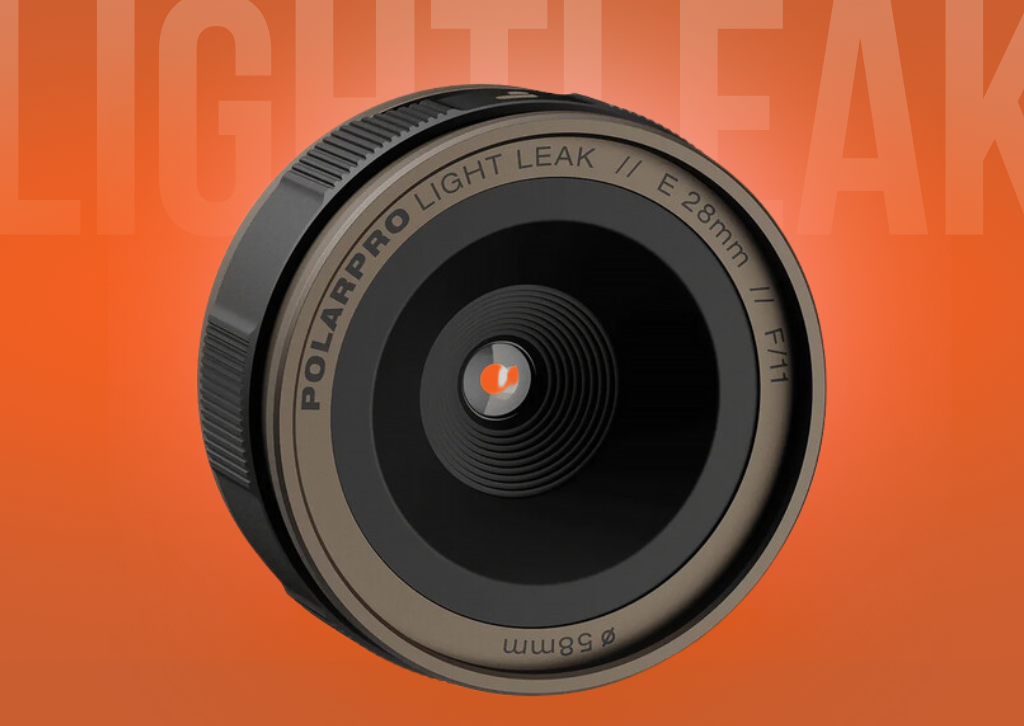
In an age where lens manufacturers obsessively pursue optical perfection—eliminating every trace of aberration, flare, and distortion—PolarPro has taken a refreshingly contrarian approach with their LightLeak series. The LightLeak 28mm f/11 lens deliberately embraces the imperfections that engineers typically spend careers trying to eliminate. This isn’t a lens for pixel-peepers or technical perfectionists; it’s a creative instrument designed to inject character, atmosphere, and a distinctly analog aesthetic into digital photography.
Build Quality and Design
The PolarPro LightLeak 28mm feels substantial in hand, with an all-metal construction that exudes quality. The lens barrel features a beautifully machined design with smooth focus and aperture rings that provide tactile feedback without being overly stiff. At approximately 200 grams, it strikes a nice balance—hefty enough to feel premium but light enough for all-day shooting without fatigue.
The lens is available in multiple mount options, including Sony E, Fujifilm X, Micro Four Thirds, and Canon RF, making it accessible to a wide range of mirrorless camera users. The compact form factor means it doesn’t overwhelm smaller camera bodies, and the 49mm filter thread is a common size that won’t require you to purchase new filters if you already have a collection.
One particularly thoughtful design element is the aperture ring, which clicks confidently at each stop. While the lens is fixed at f/11, having a physical ring adds to the tactile, deliberate shooting experience that this lens encourages. The focus ring operates smoothly through its range, though given the creative nature of this lens, precise focus becomes less critical than composition and light management.
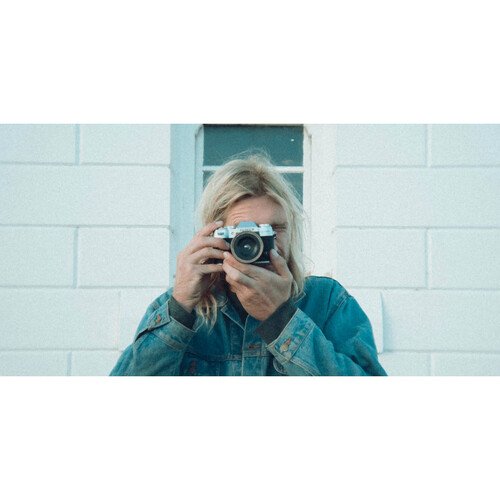
Optical Characteristics: Embracing the Flaws
Here’s where the LightLeak 28mm reveals its true purpose. This lens is engineered to produce what most manufacturers would consider optical defects. Light leaks, heavy vignetting, unpredictable flares, and soft edges aren’t bugs—they’re features. Understanding this philosophy is crucial to appreciating what PolarPro has created.
The fixed f/11 aperture might seem limiting at first glance, but it serves multiple purposes. First, it ensures a deep depth of field, keeping most scenes acceptably sharp from near to far. Second, it helps manage the intentional optical aberrations, keeping them controlled enough to be usable while still prominent. Third, it forces you to think differently about exposure, often requiring slower shutter speeds or higher ISOs that can add their own character to images.
The signature light leaks manifest in various ways depending on your light source and shooting angle. Shoot toward the sun or bright lights, and you’ll get dramatic flares, color shifts, and ethereal streaks across your frame. The effect is reminiscent of shooting with vintage lenses or deliberately damaged optics, creating images that feel lifted from another era. These characteristics aren’t uniform or predictable, which is part of the charm—each scene presents unique opportunities for creative light play.
Vignetting is pronounced, with the corners of the frame falling off into darkness in many situations. This naturally draws the eye toward the center of the composition and adds a dreamy, almost voyeuristic quality to images. The effect varies based on your subject and lighting conditions, giving you some room for creative control while maintaining that distinctive look.

Image Quality and Sharpness
Discussing “image quality” with the LightLeak 28mm requires reframing traditional metrics. By conventional standards, this lens is soft, particularly at the edges. Chromatic aberration is present, flare is abundant, and contrast can be washed out. But these characteristics are intentional, and when embraced rather than fought against, they create a distinctive aesthetic that’s difficult to replicate in post-processing.
The center sharpness at f/11 is actually quite respectable when shooting at optimal focus distances. Your main subject can be rendered with enough clarity to be recognizable and engaging while the surrounding areas drift into softer, more atmospheric territory. This combination of relative sharpness at the center and deterioration toward the edges creates natural separation between subject and environment.
Color rendering has a unique quality—images often have a slightly desaturated, vintage film-like palette that works beautifully for certain subjects. Skin tones can take on a nostalgic warmth, while landscapes gain an otherworldly, timeless quality. The lens seems to excel in golden hour and dusk lighting, where the warm ambient light interacts beautifully with the lens’s optical quirks.
Practical Shooting Experience
Using the LightLeak 28mm requires a shift in mindset. This isn’t a lens for capturing technically perfect images of your family vacation or product photography. Instead, it shines in creative, artistic applications: street photography with a vintage vibe, moody portraits, atmospheric landscapes, experimental architecture work, and music or event photography where a grainy, authentic feel enhances rather than detracts from the story.
The fixed f/11 aperture means you’ll need adequate light or a camera with good high-ISO performance. In bright daylight, you’re golden. Indoors or in lower light, you’ll be pushing your camera’s sensitivity, which can actually enhance the gritty, film-like aesthetic this lens produces. Many photographers find that pairing this lens with a bit of digital grain creates images that are nearly indistinguishable from film photography.
The 28mm focal length is versatile—wide enough for environmental shots and storytelling compositions but not so wide that it becomes difficult to manage distortion or fill the frame effectively. It’s a classic focal length that feels natural for both documentary and creative work.
Manual focus only operation means you need to slow down and be deliberate with your shooting. There’s no autofocus to rely on, which can be liberating once you embrace it. The f/11 aperture helps here, as the deep depth of field provides a generous margin for focus error. For many subjects, you can simply set the focus to a moderate distance and shoot, knowing that most of your scene will be acceptably sharp.
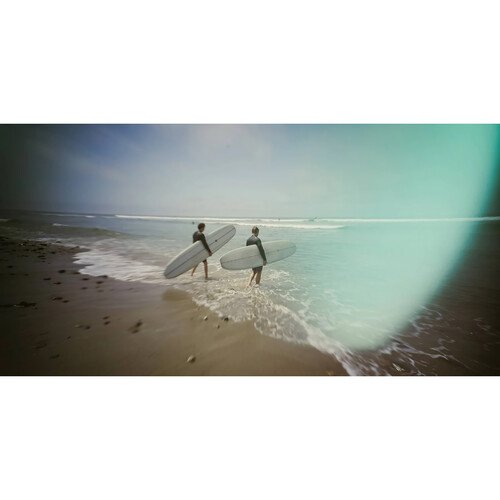
Creative Applications and Limitations
The LightLeak 28mm truly excels when you lean into its character rather than fighting it. Portrait photographers can create dreamy, romantic images with the soft edges and potential light leaks adding atmosphere that would be difficult and time-consuming to create in Photoshop. The key is positioning your subject where the lens performs best—typically in the center to center-third of the frame—and using the degraded edges as a creative element rather than a flaw.
For street photography, the lens encourages a documentary, photojournalistic approach. The vintage aesthetic it imparts makes contemporary scenes feel timeless, and the visual quirks add an authentic, unpolished quality that can enhance narrative storytelling. The compact size and manual operation also make for a discreet, contemplative shooting experience.
However, this lens isn’t for everyone or every situation. If you need clinical sharpness, accurate color reproduction, or reliability in controlled shooting environments, look elsewhere. The LightLeak 28mm is fundamentally a creative tool, not a workhorse. You wouldn’t choose it for commercial work, technical documentation, or any situation where optical perfection is the goal.
The fixed aperture also limits its versatility. You can’t open up for subject isolation or close down for maximum sharpness. You get f/11, and you work within that constraint. Similarly, the inability to control the light leaks and flares means you need to be comfortable with unpredictability. Sometimes you’ll get magical, unrepeatable results; other times, the effects might be too subtle or too overwhelming for your vision.
Value Proposition
Priced in the mid-range for specialty lenses, the LightLeak 28mm isn’t cheap, but it’s not prohibitively expensive either. The question becomes whether the unique aesthetic it provides is worth the investment. For photographers looking to expand their creative toolkit or those specifically drawn to vintage, analog aesthetics in their work, the answer is likely yes.
Consider that achieving similar effects through vintage lenses often involves hunting through used camera stores, dealing with unpredictable quality, and adapting old glass to modern mounts—often with mixed results. The LightLeak 28mm provides a controlled, repeatable version of these aesthetic qualities with modern build quality and proper communication with your camera body.
Additionally, while you can attempt to recreate these effects in post-processing, there’s something about capturing them optically that feels more authentic and organic. The way light actually behaves through this lens creates characteristics that are difficult to fake convincingly with filters or software.
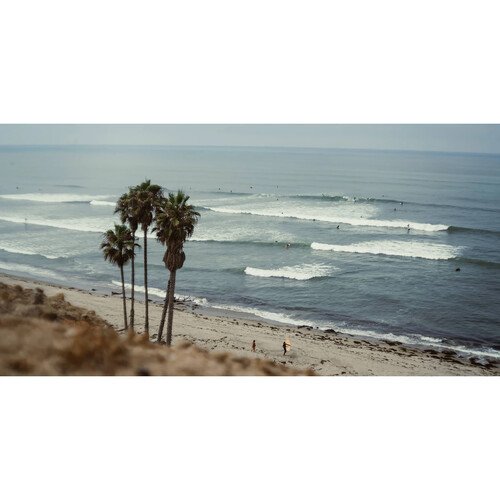
Conclusion
The PolarPro LightLeak 28mm f/11 lens is a successful execution of a singular vision: bringing analog imperfection to digital photography. It won’t replace your sharp primes or versatile zooms, but it offers something those lenses can’t—a distinctive, characterful aesthetic that feels increasingly rare in modern photography.
This lens is best suited for photographers who understand and appreciate its limitations, who see those limitations not as defects but as defining characteristics that enable a specific creative vision. If you’re drawn to the look of vintage film photography, if you find modern digital images too clinical and perfect, or if you simply want to inject more character and unpredictability into your work, the LightLeak 28mm deserves serious consideration.
It’s a lens that rewards experimentation and punishes perfectionism. It encourages you to see light differently, to embrace the unexpected, and to find beauty in imperfection. In a market saturated with technically excellent but visually similar lenses, the LightLeak 28mm stands out by zigging where others zag, making it a valuable tool for creative photographers willing to work with its unique character.

Read all our amazing Photography Reviews here
Photography
Leica D-Lux 8 Digital Camera: A Comprehensive Review
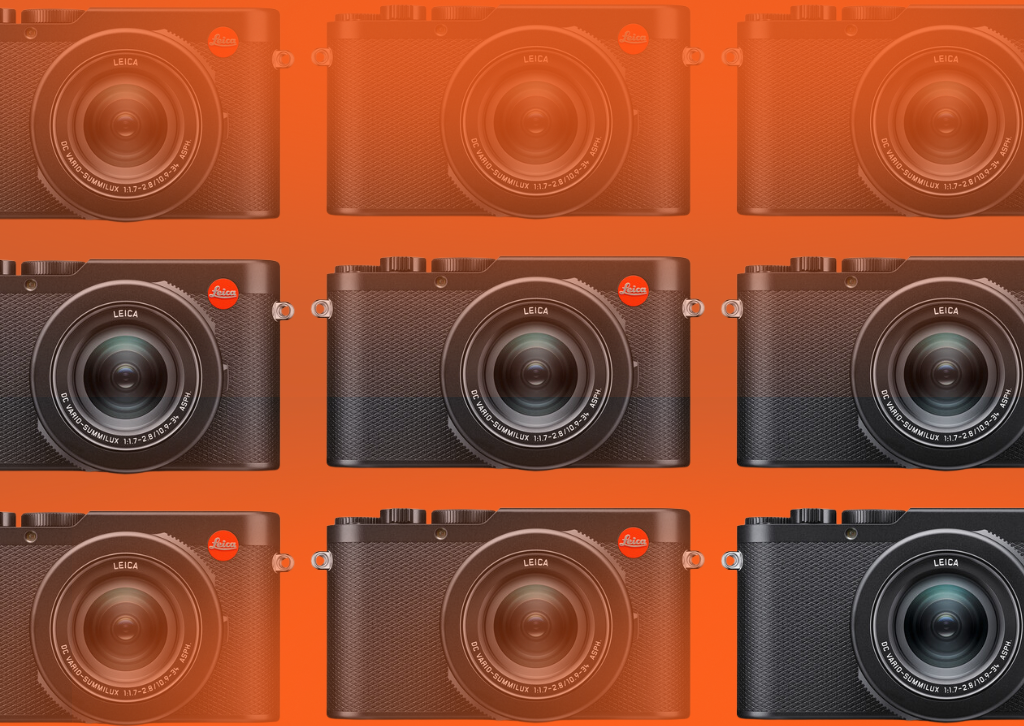
The Leica D-Lux 8 represents the latest iteration in Leica’s renowned compact camera line, offering photographers a sophisticated blend of premium build quality, exceptional optics, and modern computational photography features. As someone who has spent considerable time with this camera, I can confidently say it occupies a unique position in today’s digital camera market—one that prioritizes quality, craftsmanship, and photographic excellence over the endless megapixel race that dominates consumer electronics.
Design and Build Quality
From the moment you unbox the D-Lux 8, the Leica heritage becomes immediately apparent. The camera exudes a sense of solidity and precision that feels increasingly rare in our age of disposable electronics. Constructed with a magnesium alloy body wrapped in textured leatherette, the D-Lux 8 weighs approximately 340 grams without the battery, giving it a reassuring heft that speaks to its quality without becoming burdensome during extended shooting sessions.
The camera’s design philosophy clearly emphasizes manual control and tactile feedback. The top plate features a dedicated exposure compensation dial, a mode dial with clearly defined positions, and a beautifully knurled lens ring that rotates with perfectly damped resistance. These physical controls eliminate the need to dive into menus for fundamental photographic adjustments, allowing you to maintain focus on composition and timing rather than navigating digital interfaces.
The grip, while relatively modest in size, provides adequate purchase for secure handling. The textured thumb rest on the rear complements the front grip nicely, creating a stable three-point hold. For photographers with larger hands, the optional hand grip accessory might prove worthwhile, though I found the stock configuration perfectly serviceable for my shooting style.
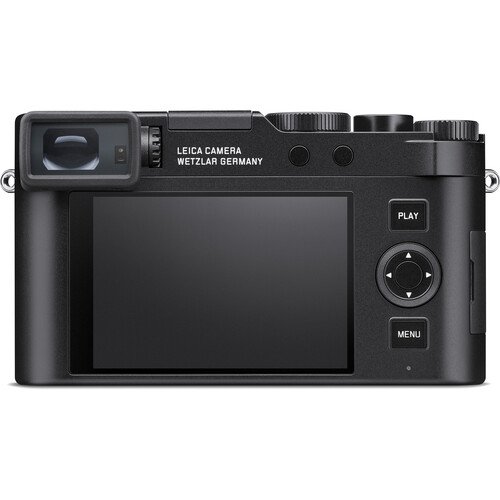
Optical Performance
At the heart of the D-Lux 8 lies a Leica DC Vario-Summilux lens with a focal range equivalent to 24-75mm in full-frame terms and a fast maximum aperture of f/1.7-2.8. This lens represents one of the camera’s most significant strengths. The optical formula delivers consistently sharp images across the zoom range, with excellent control of chromatic aberration and distortion.
The wide f/1.7 aperture at the 24mm equivalent proves particularly valuable for low-light photography and achieving pleasing background separation, even with the relatively small sensor. I was genuinely impressed by the lens’s ability to render smooth bokeh when shooting portraits or detail shots at close distances. The minimum focusing distance of just 3 centimeters in macro mode opens up fascinating possibilities for intimate product photography, food documentation, or exploring the miniature worlds that surround us daily.
Optical image stabilization works effectively to counteract camera shake, allowing for sharp handheld shots at shutter speeds that would typically produce blur. During my testing, I consistently achieved sharp images at shutter speeds two to three stops slower than I would normally attempt without stabilization.
Image Quality
The D-Lux 8 employs a Four Thirds sensor with a resolution that balances detail capture with pixel-level performance. While specification-focused consumers might fixate on megapixel counts, the D-Lux 8 demonstrates that image quality encompasses far more than raw resolution. The sensor, combined with Leica’s image processing, produces files with pleasing color science, excellent dynamic range, and well-controlled noise characteristics.
Colors straight out of camera possess a natural, film-like quality that many photographers will appreciate. Unlike some competitors that oversaturate to wow inexperienced users, the D-Lux 8 delivers colors that feel authentic and provide excellent latitude for post-processing adjustments. The standard color profile works beautifully for most situations, while the monochrome mode produces genuinely compelling black-and-white images with rich tonal gradations that honor Leica’s legendary monochrome heritage.
High ISO performance proves surprisingly capable for a compact camera. Images remain clean and detailed through ISO 1600, with noise becoming more visible but manageable through ISO 3200. Even at the highest sensitivity settings, the noise character retains a fine-grained quality that many photographers find more aesthetically pleasing than the blotchy, color-splotched noise patterns some cameras produce.
The camera’s dynamic range deserves particular mention. The sensor captures an impressive latitude of tones, preserving detail in both highlights and shadows that provides substantial flexibility during post-processing. This characteristic proves especially valuable when shooting high-contrast scenes or when exposure compromises become necessary in challenging lighting conditions.
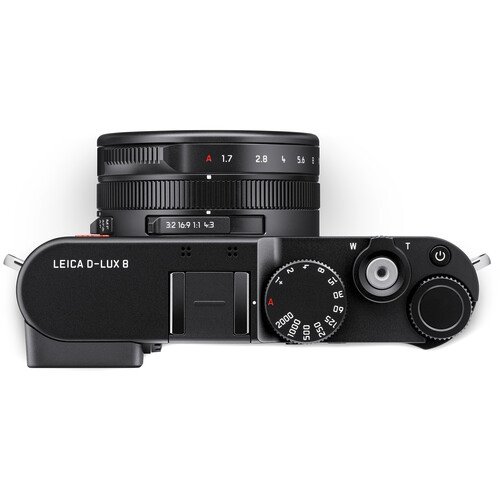
Autofocus and Performance
The autofocus system incorporates contrast-detection with depth-from-defocus technology, delivering quick and accurate focusing in most shooting scenarios. Face and eye detection work reliably for portrait photography, while the touchscreen interface allows for intuitive focus point selection by simply tapping your desired focus area.
In good lighting conditions, the autofocus responds nearly instantaneously, allowing you to capture fleeting moments without frustration. Performance does slow somewhat in dim environments, as expected with contrast-detection systems, though the built-in AF assist lamp helps when shooting nearby subjects in darkness.
Continuous shooting capabilities reach approximately 11 frames per second with continuous autofocus, sufficient for capturing moderate action or ensuring you nail the perfect expression during portrait sessions. Buffer depth proves adequate for most real-world applications, though photographers accustomed to professional sports cameras will need to moderate their expectations accordingly.
Video Capabilities
The D-Lux 8 offers comprehensive video recording options, including 4K resolution at various frame rates. Video quality impresses with the same excellent color science and sharpness that characterizes the camera’s still photography. The five-axis hybrid image stabilization for video proves particularly effective, producing smooth footage even when shooting handheld while walking.
Audio recording through the built-in stereo microphones delivers acceptable quality for casual use, though serious videographers will appreciate the external microphone input that allows for professional-grade audio capture. Headphone monitoring through the USB-C port enables real-time audio evaluation during recording.
The camera includes useful video features like focus peaking, zebras for exposure monitoring, and various creative picture styles that can dramatically alter the mood and aesthetic of your footage. Time-lapse and stop-motion capabilities expand creative possibilities for filmmakers willing to explore these techniques.
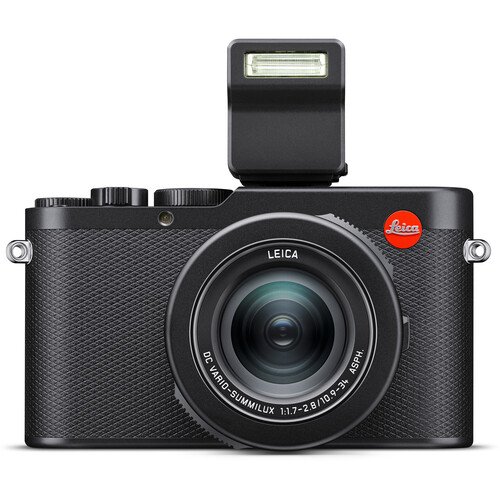
User Interface and Handling
Leica has crafted an interface that balances accessibility for newcomers with the depth demanded by experienced photographers. The touchscreen interface responds smoothly to inputs and provides an intuitive method for navigating menus and adjusting settings. The menu structure, while comprehensive, maintains logical organization that helps you locate specific functions without excessive hunting.
Physical controls complement the touchscreen beautifully. The exposure compensation dial sits perfectly positioned for thumb adjustment without removing your eye from the viewfinder. The lens control ring can be customized to adjust various parameters, including manual focus, aperture, or zoom, depending on your shooting mode and preferences.
The electronic viewfinder, while not the largest available, provides adequate resolution and refresh rate for comfortable composition. The eye sensor automatically switches between the EVF and rear screen based on proximity detection, working reliably in practice. For photographers who prefer optical viewfinders, the EVF may require an adjustment period, though the benefits of real-time exposure preview and focus magnification quickly demonstrate their value.
Connectivity and Workflow
Modern connectivity features include Wi-Fi and Bluetooth for wireless image transfer and remote camera control through Leica’s smartphone application. The app functions reasonably well, allowing for basic remote shooting and convenient image downloading to mobile devices for quick sharing on social platforms.
The USB-C port serves multiple functions, including battery charging, data transfer, and even serving as a webcam connection for video conferencing applications. This versatility eliminates the need to remove the battery for charging and simplifies cable management when traveling.
Battery Life
Battery performance provides sufficient capacity for a full day of moderate shooting, typically yielding between 300-400 shots per charge depending on usage patterns. The ability to charge via USB-C means you can replenish power using portable battery banks, laptop connections, or car chargers during travel, significantly enhancing the camera’s practical utility for extended adventures.
Value Proposition
The D-Lux 8 occupies premium pricing territory that will undoubtedly give some photographers pause. However, evaluating the camera purely through a specifications-per-dollar lens misses the broader picture of what Leica offers. This camera represents an investment in build quality that should provide reliable service for many years, optical excellence that honors Leica’s legendary standards, and an integrated shooting experience that prioritizes the craft of photography over technical gimmickry.
For photographers who value tactile controls, exceptional optics, and the satisfaction that comes from using beautifully engineered tools, the premium asks feels justified. Conversely, those primarily concerned with maximizing specifications relative to cost will find compelling alternatives that deliver more megapixels, faster burst rates, or longer zoom ranges for less money.
Final Thoughts
The Leica D-Lux 8 succeeds brilliantly at its intended purpose: providing a compact, capable camera that delivers exceptional image quality and handling for photographers who appreciate craftsmanship and optical excellence. It represents the antithesis of the disposable camera culture, offering instead a tool designed for longevity, quality, and the pure joy of making photographs.
This camera excels as a travel companion, street photography tool, or everyday carry camera for enthusiasts who want professional-grade image quality without the bulk of interchangeable lens systems. The fast lens, excellent image quality, and comprehensive manual controls create a package that encourages photographic exploration and creative expression.
The D-Lux 8 isn’t perfect—no camera is. The premium pricing may prove prohibitive for budget-conscious photographers, autofocus performance in low light trails the latest phase-detection systems, and the fixed lens design eliminates the flexibility that interchangeable lens systems provide. However, within its intended niche, the D-Lux 8 performs admirably and offers an experience that transcends mere specifications.
For photographers seeking a premium compact camera that prioritizes image quality, build excellence, and photographic craft over feature-list bragging rights, the Leica D-Lux 8 deserves serious consideration. It represents a thoughtful evolution of the compact camera concept, proving that in an age of smartphone dominance, there remains a compelling case for dedicated cameras that honor the art and discipline of photography.

Read all our amazing Photography Reviews here
Photography
Canon EOS 90D DSLR Camera: A Comprehensive Review
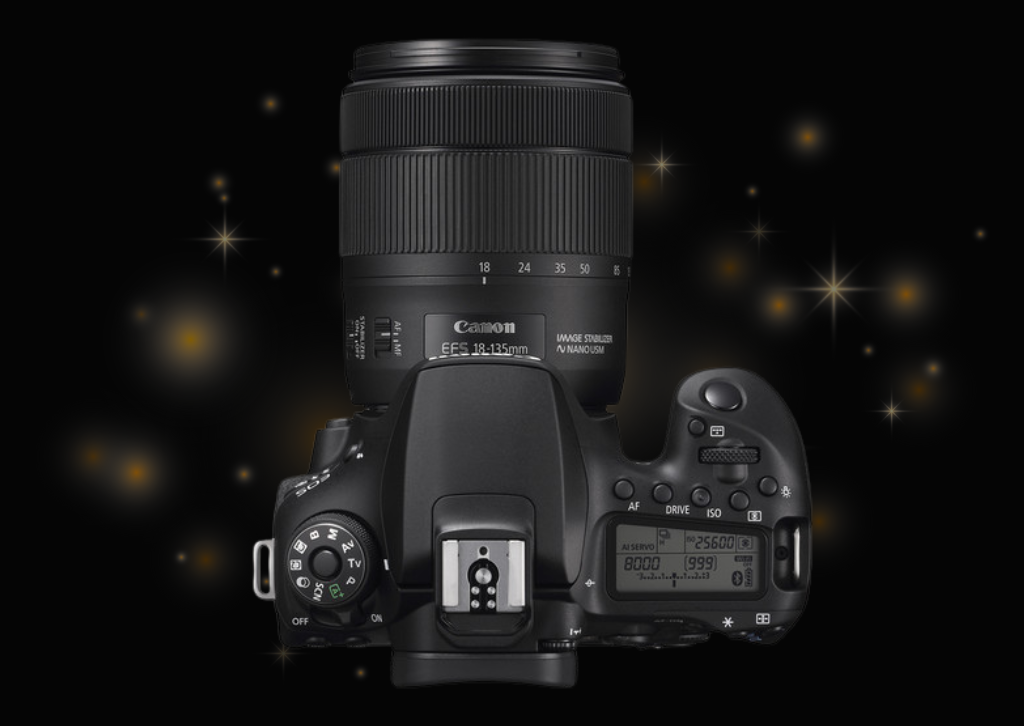
The Canon EOS 90D represents a fascinating position in Canon’s DSLR lineup—a camera that arrived at a time when mirrorless systems were rapidly gaining ground, yet managed to remind us why the traditional DSLR format still has plenty to offer. As someone who’s spent considerable time with this camera across various shooting scenarios, I can confidently say that the 90D is a powerhouse that deserves serious consideration, especially for photographers who value versatility, speed, and the optical viewfinder experience.
Build Quality and Ergonomics
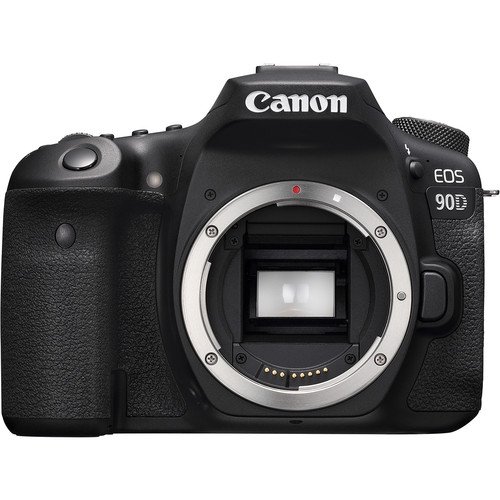
The first thing you notice when picking up the 90D is its solid, confidence-inspiring build. Canon has equipped this camera with a weather-sealed magnesium alloy body that feels substantial without being overly heavy. At approximately 701 grams with battery and card, it strikes a nice balance between durability and portability. The camera sits comfortably in hand, with a deep grip that accommodates larger lenses without causing strain during extended shooting sessions.
The button layout is quintessentially Canon, which means if you’re familiar with their ecosystem, you’ll feel right at home immediately. The controls are logically placed and fall naturally under your fingers. The rear joystick for quick autofocus point selection is particularly well-positioned, and the top LCD display provides essential shooting information at a glance. The mode dial has a locking mechanism to prevent accidental changes, and the dedicated ISO and exposure compensation buttons on top make quick adjustments effortless.
One aspect I particularly appreciate is the articulating touchscreen. Unlike a fully articulating screen, this vari-angle design flips out to the side, making it invaluable for shooting at awkward angles, whether you’re going low for a macro shot or holding the camera overhead in a crowd. The touchscreen functionality itself is responsive and intuitive, allowing you to tap to focus and even navigate through menus with ease.
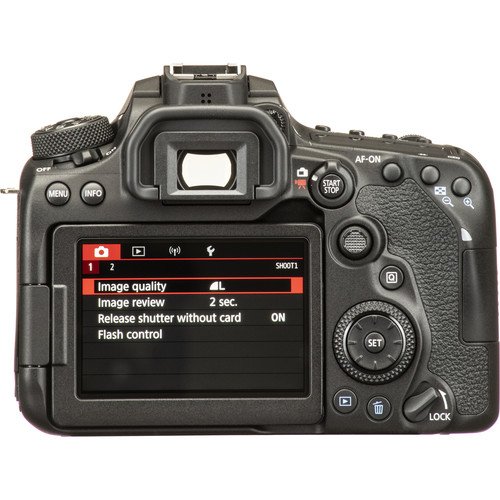
Image Quality and Sensor Performance
At the heart of the 90D lies a 32.5-megapixel APS-C CMOS sensor—the highest resolution APS-C sensor Canon has ever produced for their DSLRs. This impressive resolution delivers exceptional detail and provides plenty of room for cropping without sacrificing image quality. When paired with quality glass, the images from this sensor are remarkably sharp with excellent color reproduction that Canon is renowned for.
The dynamic range is quite good for an APS-C sensor, though it doesn’t quite match what you’d find in some competing cameras or full-frame alternatives. In practical terms, you have decent latitude for recovering highlights and shadows in post-processing, though you’ll want to be mindful of not blowing out highlights in high-contrast situations. The camera handles a wide range of lighting conditions admirably, from bright outdoor scenes to more challenging indoor environments.
Color science is an area where Canon traditionally excels, and the 90D is no exception. Straight out of camera, JPEGs display pleasing, natural-looking colors that often require minimal editing. Skin tones, in particular, are rendered beautifully, making this camera an excellent choice for portrait photography. For those who prefer to shoot RAW, the files provide substantial flexibility for post-processing while maintaining clean, detailed images.
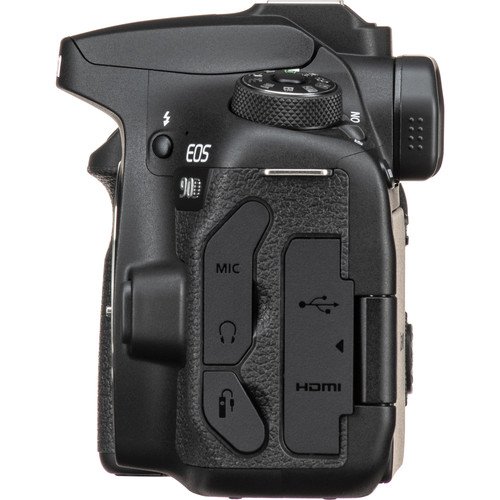
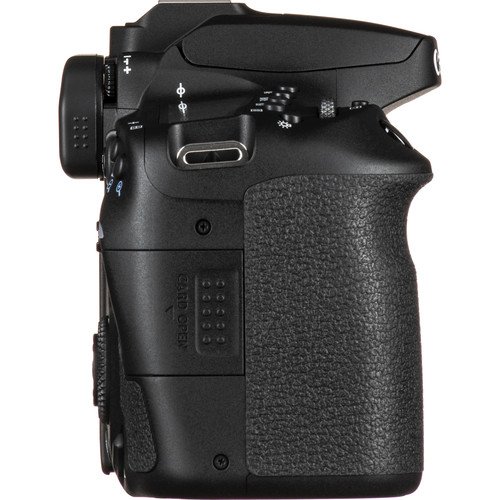
Autofocus System and Performance
The 90D features Canon’s 45-point all cross-type autofocus system when shooting through the optical viewfinder. This phase-detection system is fast, accurate, and reliable even in challenging lighting conditions. The coverage area is reasonable, though not edge-to-edge, which is typical for DSLR systems. In real-world use, I found the autofocus to be consistently reliable for general photography, portraits, and even action shots.
When you switch to Live View mode, the camera utilizes Canon’s Dual Pixel CMOS AF system, which is arguably one of the best features of this camera. The Dual Pixel AF provides 5,481 selectable autofocus positions covering approximately 88% of the frame horizontally and vertically. Face and eye detection work remarkably well, making portrait photography in Live View an absolute pleasure. The autofocus smoothly tracks subjects across the frame with impressive accuracy.
For video shooters and those who prefer composing shots on the rear screen, the Dual Pixel AF is a game-changer. It’s smooth, confident, and rarely hunts—characteristics that make it suitable for both photography and serious video work.
Continuous Shooting and Buffer
One of the 90D’s standout specifications is its continuous shooting speed of 10 frames per second when using the optical viewfinder. This makes it an excellent choice for action, sports, and wildlife photography. The camera can maintain this speed for approximately 58 RAW files or unlimited JPEGs before the buffer fills up, which is quite impressive and should satisfy most shooting scenarios.
The combination of fast continuous shooting and reliable autofocus makes the 90D a capable tool for capturing fast-moving subjects. Whether you’re photographing birds in flight, sports action, or energetic children, the camera gives you the tools to freeze the moment reliably.
Video Capabilities
The Canon EOS 90D is a genuinely competent video camera, offering uncropped 4K recording at up to 30 frames per second. The fact that it shoots 4K without a crop is significant for an APS-C camera, as it means your lenses maintain their intended field of view. The 4K footage is sharp and detailed, though it’s worth noting that continuous autofocus during 4K recording is available but limited to contrast-detection AF rather than the superior Dual Pixel AF system used in 1080p mode.
For 1080p recording, you have options up to 120 frames per second, perfect for creating smooth slow-motion footage. The Dual Pixel AF in 1080p mode is excellent, providing smooth and reliable focus tracking that rivals many dedicated video cameras. The articulating screen, headphone jack, and microphone input make this a well-equipped camera for content creators and videographers.
One limitation to be aware of is the lack of in-body image stabilization. You’ll need to rely on optically stabilized lenses for steady handheld footage, or use a gimbal for more dynamic movement. Additionally, there’s a 30-minute recording limit per clip, which is common among cameras to avoid European taxation rules, but can be restrictive for some video applications.
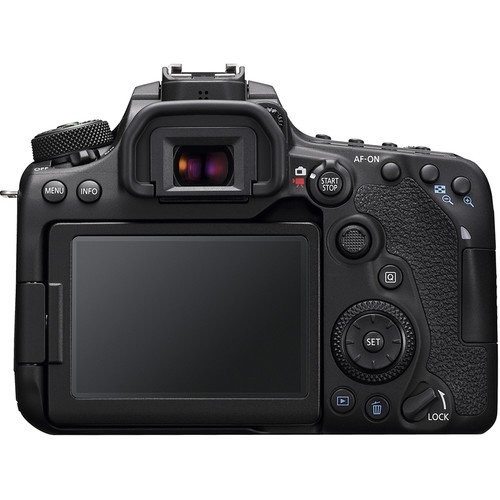
ISO Performance and Low Light
The 90D offers a native ISO range of 100-25,600, expandable to 51,200. Low-light performance is solid, with clean, usable images up to around ISO 3200. As you push into the higher ISO ranges, noise becomes more apparent, but it remains well-controlled and maintains an appealing grain structure rather than looking splotchy or color-shifted.
For most everyday shooting scenarios, the high ISO performance is more than adequate. I’ve successfully shot indoor events and evening scenes at ISO 6400 with results that clean up nicely with a bit of noise reduction in post. While it may not match the low-light prowess of newer full-frame cameras, it performs admirably for its class.
Battery Life
The 90D uses Canon’s LP-E6N battery, and battery life is another area where DSLRs still hold an advantage over mirrorless cameras. The official CIPA rating is approximately 1,300 shots per charge when using the optical viewfinder, which is excellent. In real-world use, especially if you’re mixing viewfinder and Live View shooting, you can expect to get through a full day of moderate shooting on a single battery. If you’re shooting video extensively, you’ll want to have spare batteries on hand as video recording drains the battery much faster.
Who Should Buy the Canon EOS 90D?
The 90D is ideally suited for several types of photographers. Enthusiasts looking to upgrade from an entry-level DSLR will find a significant step up in performance, features, and build quality. Wildlife and sports photographers on a budget will appreciate the fast continuous shooting speed and the effective focal length multiplier that comes with the APS-C sensor. The camera is also excellent for content creators who need both strong photo and video capabilities in a single package.
The high-resolution sensor makes it appealing for landscape photographers who want maximum detail, while the reliable autofocus and good color science make it a strong choice for portrait work. Parents documenting growing families will find it has more than enough power for all occasions while remaining relatively approachable to use.
Final Thoughts
The Canon EOS 90D is a mature, refined DSLR that represents the culmination of decades of Canon’s experience in building cameras of this type. It may not represent the cutting edge of camera technology in an era increasingly dominated by mirrorless systems, but it offers a compelling package of features, performance, and value that shouldn’t be overlooked.
The combination of 32.5 megapixels, 10fps shooting, excellent autofocus systems, and strong video capabilities makes this an incredibly versatile tool. The optical viewfinder provides a direct, lag-free view of your subject, and the substantial battery life means less worry about running out of power at critical moments. For photographers invested in Canon’s EF and EF-S lens ecosystem, the 90D is a natural choice that lets you leverage your existing glass without adapters.
While it’s true that mirrorless cameras offer certain advantages in size, weight, and cutting-edge features, the 90D proves that there’s still life in the DSLR format. It’s a camera that gets out of your way and lets you focus on capturing great images, and sometimes that’s exactly what you need. Whether you’re a dedicated enthusiast, a professional needing a reliable backup, or someone who simply prefers the DSLR shooting experience, the Canon EOS 90D delivers the goods with confidence and capability.

Read all our amazing Photography Reviews here
-

 Photography3 months ago
Photography3 months agoSony FE 16mm f/1.8 G Review: The Ultra-Wide Prime for the Modern Creator
-
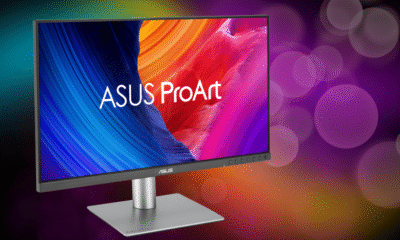
 Computers3 months ago
Computers3 months agoAsus ProArt Display 6K PA32QCV Review: A Visual Feast for Professionals
-

 Tablets5 months ago
Tablets5 months agoClash of the Titans: 13″ iPad Pro M4 vs. Samsung Galaxy Tab S10 Ultra – Which Premium Tablet Reigns Supreme?
-

 Home Tech3 months ago
Home Tech3 months agoThe Guardian of Your Threshold: An In-Depth Review of the Google Nest Doorbell
-

 Computers4 months ago
Computers4 months agoASUS Zenbook Duo: A Pretty Awesome Dual-Screen Laptop
-

 Photography4 months ago
Photography4 months agoAdobe’s “Project Indigo” is the iPhone Camera App We’ve Been Waiting For, and It’s Awesome
-

 Photography3 months ago
Photography3 months agoDJI Osmo 360 go: The Next Generation of Immersive Storytelling?
-

 Health Tech3 months ago
Health Tech3 months agoLumen Metabolism Tracker: A Deep Dive into Your Metabolic Health
-

 Computers4 months ago
Computers4 months agoApple Mac Studio Review: A Desktop Powerhouse Redefined
-

 Home Tech3 months ago
Home Tech3 months agoRevolution R180 Connect Plus Smart Toaster: More Than Just Toast?
-

 Computers4 months ago
Computers4 months agoSamsung 15.6” Galaxy Book5 360 Copilot AI Laptop: A Deep Dive into the Future of Productivity
-

 Photography4 months ago
Photography4 months agoCanon EOS 5D Mark II: A Timeless Workhorse for Discerning Photographers











